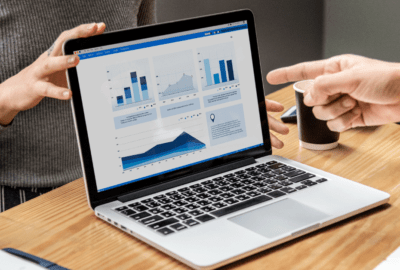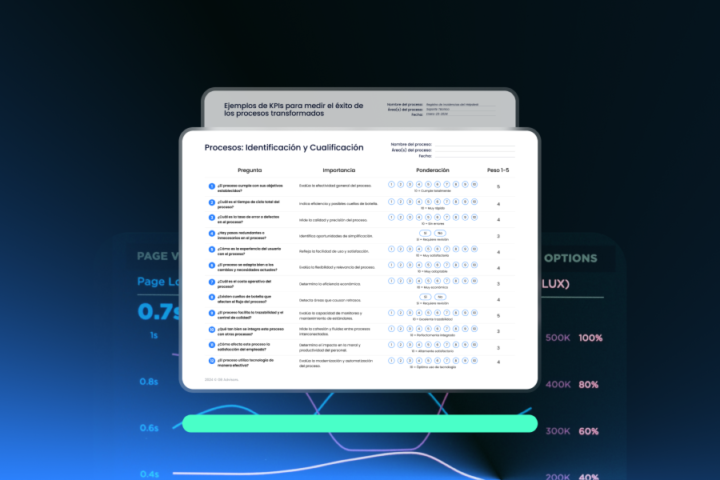It is evident that nowadays, technology represents one of the central pillars of companies; and one of the key factors for the good functioning of any business. However, despite its great virtues, it is not free from unexpected failures. That is why the implementation of a good IT Monitoring strategy is essential for organizations to ensure the continuity of their services.
It is imperative that you assess your IT area regularly, having the right systems in place and asking yourself the key questions that will guide you on the right path.
During the lifetime of an IT asset, IT monitoring is a key element in ensuring the optimal performance of the networks that make up your systems. Read on and learn more about the benefits of continuous analysis of your IT equipment.
What exactly is IT Monitoring?
IT monitoring is a control and monitoring activity that measures the movement of digital assets that make up an organization’s IT ecosystem. Its objective is to thoroughly understand the behavior of the network of technological resources that interact within the company, to optimize its performance and respond quickly to any possible failure.
What are the possible consequences of not monitoring your systems regularly?

The malfunction of one or more IT components can cause significant damage that affects the proper functioning of the company. Some of these negative effects may include Long periods of downtime, decreased productivity, non-compliance with SLAs, etc. Likewise, among the most likely causes of these failures, we find:
- System obsolescence.
- Inadequate system configuration.
- Undetected computer attacks, etc.
In this context, it is essential to implement measures to effectively monitor systems to ensure the continued operation of all vital processes of the company.
What does this type of monitoring measure?
This kind of monitoring is aimed at analyzing the behavior of any component of the IT ecosystem. In other words, it can measure, for example:
- The physical state of a piece of equipment, i.e., temperature, hard disk, memory, etc.
- A load of a computer (including the number of users, requests, CPU usage, and network performance, among others).
- The performance of the computer network (performance, the occurrence of errors, etc.).
- System attacks.
5 reasons to apply continuous IT Monitoring in your organization
#1 Obtaining a cartography of the system

One of the most important advantages of IT Monitoring is that it allows a complete mapping of the system. This mapping gives organizations the opportunity to gain in-depth insight into the behavior of all IT components, including network devices, servers, virtual cloud, and wireless environments, among others.
#2 Development of a Preventive Approach
As your business grows, performance, as well as the response and storage capabilities of your equipment, may begin to decline. The best way to detect this decrease in capacity, to avoid any failure, is through constant IT Monitoring. This kind of monitoring helps IT teams develop a preventive approach, in which they can spend most of their time identifying and preventing problems before it’s too late.
#3 Regulatory Compliance
Another task of the IT teams is to ensure compliance with all regulatory standards required by the competent authorities. Through 24/7 monitoring, these teams will be able to collect valuable information that permits them to detect abnormal behaviors and detect any possible threat to the security of the data handled in the company. In addition, it allows them to generate consistent reports of the follow-up of the performance of the organization, in order to meet the expectations of the organization’s executives.
#4 Prevention of downtime
Good business never stops; and if it does, the consequences are usually catastrophic. Considering then that downtime affects enormously the productivity of the organization; it is important for the IT teams to avoid any type of interruption of the activities of the company. In this context, IT Monitoring becomes essential. Because it allows IT professionals to respond immediately to any malfunction of any asset of the company.
#5 Identification of new opportunities

IT Monitoring is not only useful to identify problems but also to highlight new opportunities for improvement of the organization. By discovering obsolete software or equipment, IT teams can take the first steps toward acquiring more innovative resources that enable the company to leverage its processes and service delivery.
In conclusion, IT monitoring makes it possible to take the measures that will be used to
- Build graphs to visualize IT asset performance and trends.
- Alert IT professionals in real-time in the event of any type of incident.
- Execute scheduled actions such as restarting a service or shutting down the network in the event of an attack.
Want to keep your PCs active and protected? Get a software solution that facilitates the IT Monitoring process. If you have no idea which one might work best for your business, we recommend you take a look at Bomgar. An excellent monitoring tool designed to make it easier for you to monitor your IT equipment.
Learn more about Bomgar or any other ITSM or ITsec solution through our team of GB Advisors experts. We provide complete and quality advice along with the best software solutions on the market.



